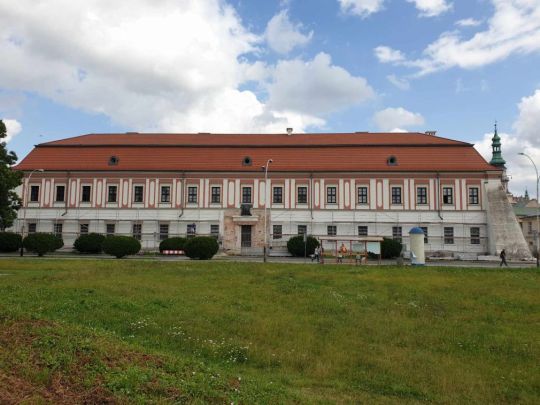#Zamość
Text

Zamość and Łabuńka River, 30.04.2023
#poland#polska#photography#photographers on tumblr#canon#canon photography#nature#landscape#zamość#lubelskie#lubelszczyzna#zamojskie#zamojszczyzna#green#grass#river#łabuńka river#spring#springtime#trees#golden hour
74 notes
·
View notes
Text
The Galician campaign of 1809
Today let me tell you a little bit about the Galician campaign of the Austro-Polish war of 1809, which proved to be a great success for the Duchy of Warsaw.
After the battle of Raszyn there happened the series of small battles, which prevented Austrians from crossing the Vistula, thus leaving the initiative on the right bank of the river firmly with the Poles. So, the Polish forces under Poniatowski’s command moved along Vistula to the South-East, to the lands Austria seized during the latest partition of Poland.
On the 14th of May the Polish Army entered Lublin:
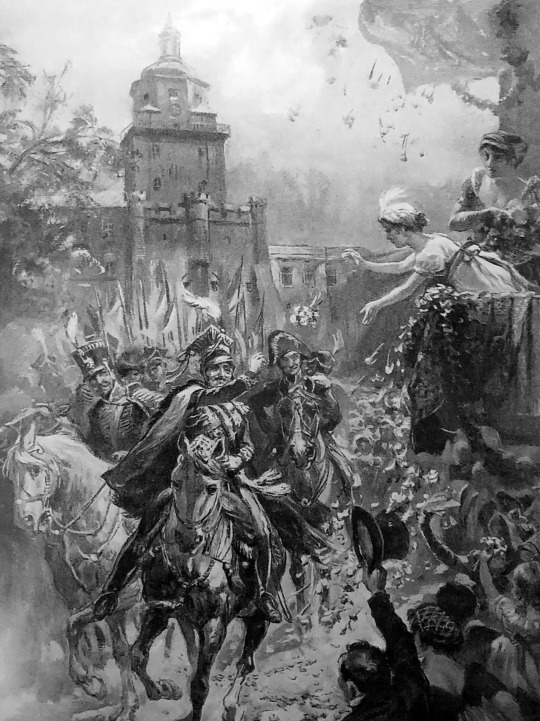
Konstanty Gorski, "Prince Józef Poniatowski enters conquered Lublin in 1809, showered with flowers by ladies"
As Kajetan Koźmian recalls in his memoirs, Poniatowski and his men were greeted with "joy and elation", and in the evening "... the city and the citizens gave a great ball <...> in the house in Korce. Prince Józef honored them with his presence starting the ball."
The next city on the way of the Polish Army was Sandomierz, and after a short siege it was taken on the 18th of May.

Siege of Sandomierz in 1809.

Michał Stachowicz, a scene from the battles in Galicia ("The Capture of Zamość")
Then there was Zamość, where the Polish trooped entered on the 20th of May.
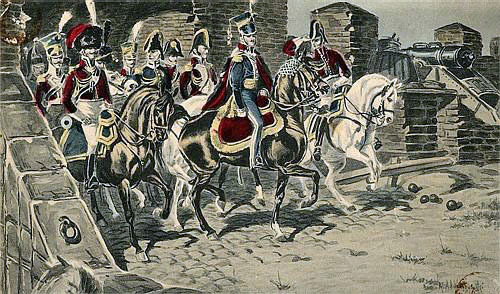
Siege of 1809, M. Adamczewski Entry of Prince Poniatowski to Zamość (postcard)
On the 27th of May the Polish advanced forces even reached the city of Lwów, but prince Józef wasn’t among them.
Meanwhile the Austrians under command Archduke Ferdinand realized the precariousness of their position in the center of Poland, and on the 1st of June left Warsaw for the south.
Poniatowski, for his part, decided not to engage with the Austrian, focusing instead on "liberating” as much Galician land as possible.

Prince Józef Poniatowski seeks information from local peasants in Galicia in 1809, a photo of Stanisław Bagieński's painting
On the 3rd June there appeared the third participant of the events - Russian forces crossed the Austrian border to Galicia as well. And though formally they were acting as Napoleon’s ally, as was prescribed in the Tilsit Treaty, their real goal was to prevent the Poles from taking too much of the Austrian-held territories.
So, to outwit the Russians prince Józef was taking Galician cities not in the name of the Duchy of Warsaw, but in the one of emperor of the Frenchmen. Like the proclamations were being made in the name of Napoleon, the eagles on the coats-of-arms replacing the Austrian ones were not Polish and French etc.
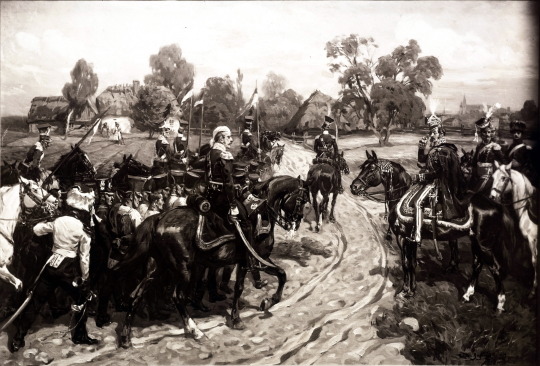
Lancers lead Austrian prisoners of war near Kraków in 1809, in front of Prince Józef Poniatowski, a photo of Stanisław Bagieński's painting
Then, in the outer theater of war on the 6th of July the French defeated the Austrians at the Battle of Wagram. And according Franco-Austrian truce signed five days later the land division was to take place along the line where the troops were at the time of receiving news of the truce, not at the time its signing.

The Austrian army leaves Wawel, a postcard based on the painting of Wojciech Kossak
And so began the race between Russians and Poles, to advance to as farther as possible.
In the middle of July both armies reached Kraków.

PRINCE JOSEPH'S ENTRY TO KRAKOW. A drawing by Jan Feliks Piwarski.
And there the clash of the interest took place.
Poniatowski approached the city from the side of St. Florian's Gate, but it turned out that the Austrians, wanting more comfortable terms of capitulation, had already let Russian troops into Kraków.
The Russians, namely the Cossacks of General Sievers, wanted to deny Poniatowski passage. But Prince Józef, as Dezydery Chłapowski recalls in his memoirs, "draw his broadsword and with together his staff galloped into the gate through the Cossacks". The Polish infantry followed its commander "in a double step <...> so that the Cossacks were pressed against the walls of the gate." Seeing this, Mariampol's hussar regiment, which was stationed at that time in the market square, make a decision to put up resistance and due to this, the whole Polish army was able to enter the city.

Michał Stachowicz, The entry of Prince Józef Poniatowski into Krakow on July 15, 1809
Then, as Ambroży Grabowski recalled, when prince Józef’s troops reached the market square, “in front of the church of St. Wojciech, the magistrate went out to meet the prince, to give him the keys of the city”.
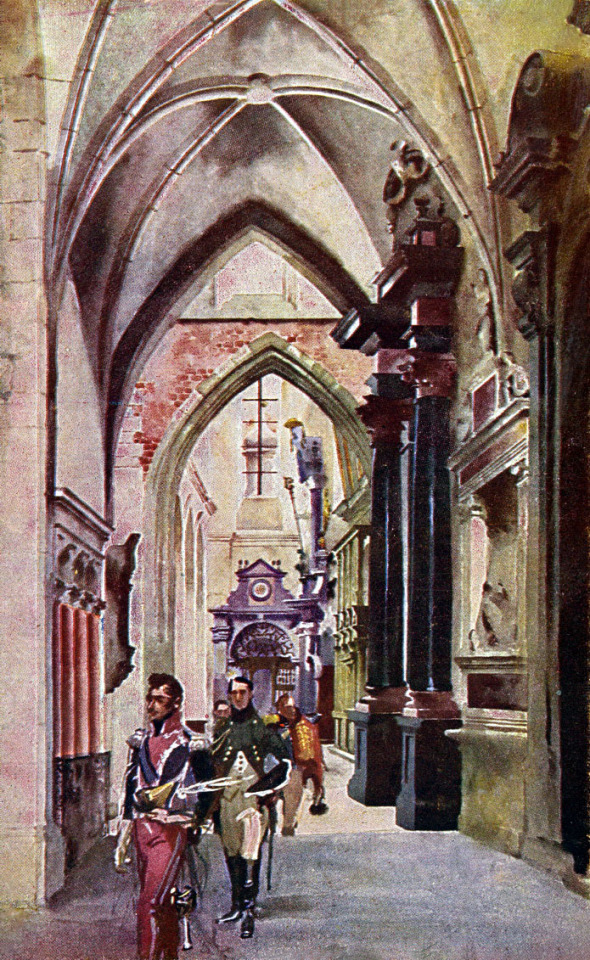
Józef Poniatowski in the Cathedral after Kraków was taken from the Austrians, an image by Stanisław Tondos and Wojciech Kossak
Most probably prince Józef visited the Wawel cathedral during his sojourn in Kraków that time. (In a small voice: little did he know that in 8 years he’ll be buried there...)
And after exactly a month since the Polish troops entered Kraków, there was a ball arranged in the Cloth-hall, the image depicting it I have already posted here.
#Poniatowski#Jozef Poniatowski#józef poniatowski#1809#Galicia#Lublin#Sandomierz#Zamość#Kraków#Austro-Polish War#Konstanty Gorski#Michał Stachowicz#Stanisław Bagieński#Wojciech Kossak#Feliks Piwarski#Kajetan Koźmian#Dezydery Chłapowski#ambroży grabowski
32 notes
·
View notes
Text

9 notes
·
View notes
Text
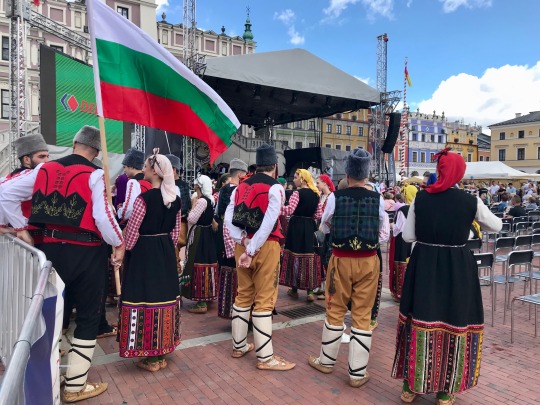







Dance festival, Zamość
8 notes
·
View notes
Photo

Ul. Akademicka w Zamościu (lata 30).
14 notes
·
View notes
Text
Russia tried to shoot down a UK surveillance aircraft flying over international waters. Fortunately, the pilot was a bad shot and had defective ordnance on his plane.
A Russian pilot tried to shoot down an RAF surveillance plane after believing he had permission to fire, the BBC has learned.
The pilot fired two missiles, the first of which missed rather than malfunctioned as claimed at the time.
Russia had claimed the incident last September was caused by a "technical malfunction".
The UK's Ministry of Defence (MoD) publicly accepted the Russian explanation.
But now three senior Western defence sources with knowledge of the incident have told the BBC that Russian communications intercepted by the RAF RC-135 Rivet Joint aircraft give a very different account from the official version.
The RAF plane - with a crew of up to 30 - was flying a surveillance mission over the Black Sea in international airspace on 29 September last year when it encountered two Russian SU-27 fighter jets.
The intercepted communications show that one of the Russian pilots thought he had been given permission to target the British aircraft, following an ambiguous command from a Russian ground station.
Professionalism is not something which the Russian military is known for.
One Western source told the BBC the words they received were to the effect of "you have the target".
This ambiguous language was interpreted by one of the Russian pilots as permission to fire.
The loose language appears to have shown a high degree of unprofessionalism by those involved, sources said. In contrast, Nato pilots use very precise language when asking for and receiving permission to fire.
The Russian pilot released an air-to-air missile, which successfully launched but failed to lock on to its target, the BBC has been told. It was a miss, not a malfunction.
Defence sources have told the BBC that a row then broke out between the two Russian pilots.
The pilot of the second SU-27 did not think they had been given permission to fire.
He is said to have sworn at his comrade, effectively asking him what he thought he was doing.
Yet the first pilot still released another missile.
We had been told that the second missile simply fell from the wing - suggesting the weapon either malfunctioned or that the launch was aborted.
Shooting down the RAF RC-135 Rivet Joint could very well have brought NATO directly into the war. NATO's Article 5 stipulates that an attack on one NATO country is the same as an attack on all NATO countries.
In a much more recent incident, debris from a Russian drone fell on NATO member Romania.
Romania calls for calm as debris from possible Russian drone attacks on Ukraine discovered
In the early hours of Wednesday morning, villagers from eight communities near the banks of the Danube River — which forms a border between Romania and Ukraine — received alerts to their mobile phones warning them to keep calm but take shelter, as there was a possibility of objects coming from the sky.
Not long after, residents near the small Romanian village of Plauru heard explosions.
"We are scared," said Elisabeta Samsanov, one of the few dozen people living in the remote community just 300 metres from the Ukrainian port of Izmail, which has become a frequent target of Russian drones in recent weeks.
"One night when they dropped one after another, we came out of the house ... and it felt like an earthquake."
And earlier this year the remains of a Russian Kh-55 missile were found in Poland – another NATO member.
Poland finds Russian missile in forest 500km from Ukrainian border: report
In late April 2023, a civilian reported the presence of a rocket stuck in the ground of a forest in Zamość, close to the city of Bydgoszcz. An investigation was launched by the Polish Air Force Institute of Technology to identify the debris.
According to the local media channel RMF FM, a preliminary inspection found the rocket to be a Kh-55 cruise missile. Citing military sources, the radio station reported that the cruise missile was fired during an air raid on Ukraine carried out in December 2022 by Russian aircraft based in Belarus.
A reminder that Russia has no fucking business in Ukraine. Russia started the largest war in Europe since 1945 as an imperialistic land grab. Vladimir Putin is directly to blame for all the violence and destruction that's resulted from this conflict.
If Elon Musk is worried about nuclear war then perhaps he should put pressure on his buddies in Moscow instead of sabotaging Ukraine.
#invasion of ukraine#stand with ukraine#royal air force#uk#raf rc-135 rivet joint#black sea#su-27#romania#drone debris on romanian territory#poland#kh-55#russian missile crashes in poland#zamość#nato#article 5#черное море#агрессивная война россии#владимир путин#путин хуйло#românia#polska#НАТО#руки прочь от украины!#геть з україни#вторгнення оркостану в україну#україна переможе#слава україні!#героям слава!
0 notes
Photo

Urlopowo #zamość (w: Zamosc) https://www.instagram.com/p/Cn4PIq_tQji/?igshid=NGJjMDIxMWI=
0 notes
Photo

After #Concert #Workshop #Horn #Zamość #Music #School #DariuszMikulski #MichałKantor #JakubZygmunt #MikołajGajdzis #WiktoriaKrawczyk #XieWei #BasiaSkura #JulkaGuz #TomaszZajac #FanJianghong #BeataSyczuk #MagdalenaAdamczyk #JiaqiHao #WeAreHansHoyer #ZMConcept #MeetMikulski (hier: Państwowa Szkoła Muzyczna I i II st. im. Karola Szymanowskiego w Zamościu) https://www.instagram.com/p/ClNrXGsA8jL/?igshid=NGJjMDIxMWI=
#concert#workshop#horn#zamość#music#school#dariuszmikulski#michałkantor#jakubzygmunt#mikołajgajdzis#wiktoriakrawczyk#xiewei#basiaskura#julkaguz#tomaszzajac#fanjianghong#beatasyczuk#magdalenaadamczyk#jiaqihao#wearehanshoyer#zmconcept#meetmikulski
1 note
·
View note
Text
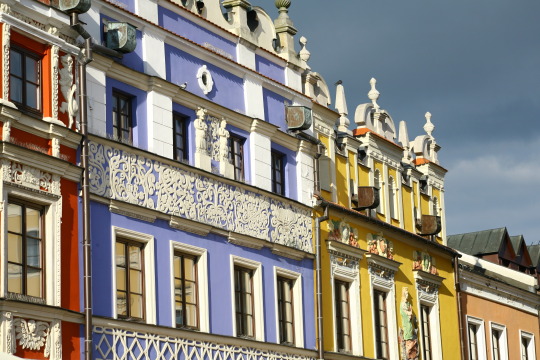
Armenian Houses, 30.04.2023
Zamość, Poland
#poland#polska#photography#photographers on tumblr#canon#canon photography#architecture#building#zamość#zamojskie#lubelskie#lubelszczyzna#tenement
105 notes
·
View notes
Photo
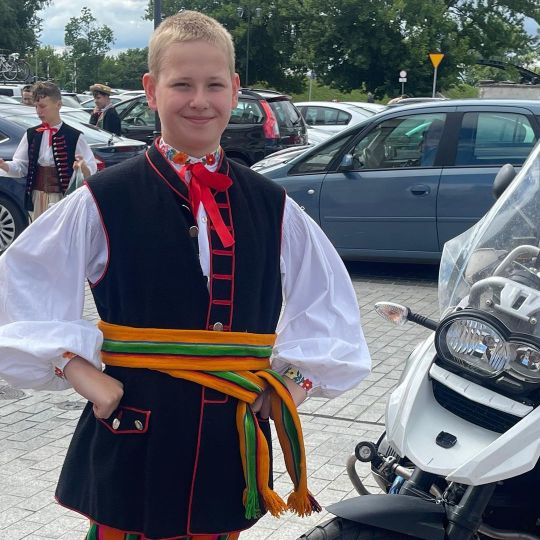
A folk festival in #Zamość, Poland. Making my way up to #Lublin and then #Warsaw. #Zamojszczyzna #police #nowar #worldcentralkitchen #IUNHCR #europe #ukraine #poland #polska #ukrainewar #russia #war #putin #stopwar #standwithukraine #peace #stopputin #ukrainetoday #usa #nato #helpukraine #military #kyiv #ukraina #planetearthquest #encinitas #leucadia (at Zamość Starówka) https://www.instagram.com/p/CgJoZnFjgwf/?igshid=NGJjMDIxMWI=
#zamość#lublin#warsaw#zamojszczyzna#police#nowar#worldcentralkitchen#iunhcr#europe#ukraine#poland#polska#ukrainewar#russia#war#putin#stopwar#standwithukraine#peace#stopputin#ukrainetoday#usa#nato#helpukraine#military#kyiv#ukraina#planetearthquest#encinitas#leucadia
1 note
·
View note
Text

11 notes
·
View notes
Text
People keep asking if Stefania is my grandmother or something. No, my grandmother was from Zamość and named Leah. Stefania is simply the love of my life for autism reasons
#Although I imagine my grandma laughing uproariously from the afterlife at my obsession with interwar Poland#They were in Zamość for as far back as there are records of Zamość#We were gravediggers and bakers which is delightfully macabre to me
18 notes
·
View notes
Text
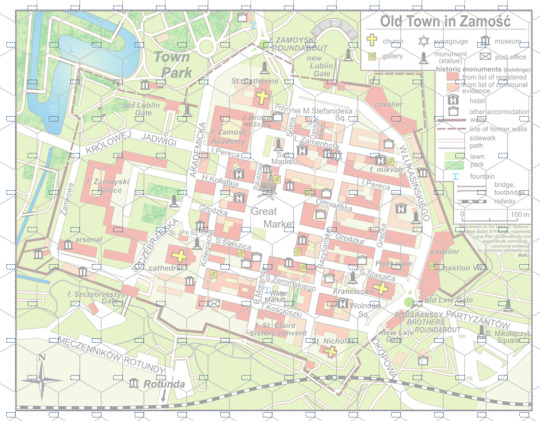
For Dungeon23, I'm making towns and blocks for my Yiddish fantasy setting of Nowa Polska. We'll be starting with the town of Zamość, a town that has quite the unusual history. Zamość was built all in one go in 1580 by a team of imported Italian architects by Jan Zamoyski and modelled on Renaissance Italian cities. We run into a major setting-specific problem immediately: the Corruscation (which boiled the land and soured the seas) happens in the early 16th century, before the town was founded, and would have prevented hiring Italian architects, as hundreds of miles of impassible forest would have separated Italy from Nowa Polska. Ordinarily, I'd remove the city from my maps and leave the area empty, but Zamość was a major Jewish population center and is extraordinarily well-documented. We can sub in an Italian-educated architect already in Nowa Polska at the time of the Corruscation for Bernardo Morando (the Venetian architect for the city). Problem solved.
Onto blocks! (if you want to know what I mean by blocks, check out this lovely post by Alexis Smolensk: The Tao of D&D: Building Blocks) For Dungeon23, we build one room a day, so I'll strive to make 1 block each day. Once we populate Zamość, we'll move on to another city! If y'all have thoughts about where we might visit next, let me know!
Our first block will be the Great Market in hex 6,6. This Market-type block allows players to buy and sell all manner of goods. Due to the high foot traffic from all parts of the city, players who spend time here can ask questions about the city, learn about people of note, hear the hottest gossip, and so on. The Great Market is also where town festivals and celebrations are held, which provide their own opportunities for mischief and coin.
44 notes
·
View notes


